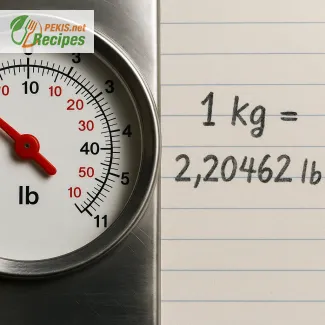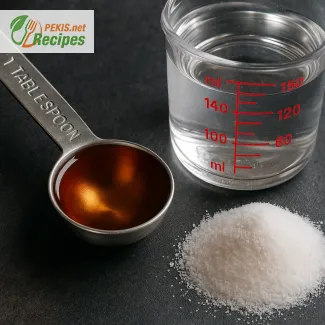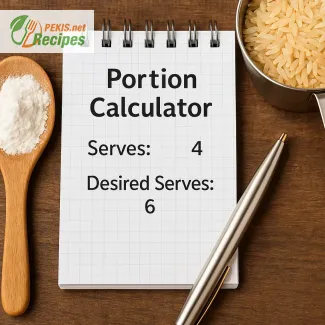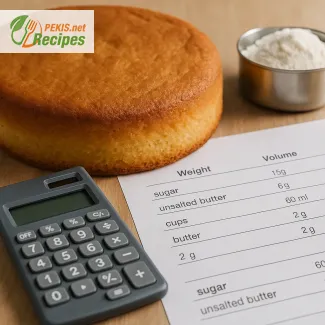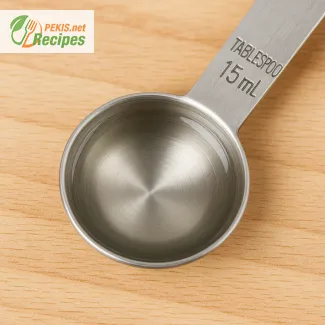
A tablespoon is not universally the same size: in the US it equals about 14.79 ml, in most metric countries it is standardized to 15 ml, and in Australia it measures 20 ml. Precise conversion ensures reliable results in baking, cooking, and mixology, avoiding errors when following international recipes. Quick rules help: 1 tbsp ≈ 15 ml, 2 tbsp ≈ 30 ml, 4 tbsp ≈ 60 ml. From Mediterranean olive oil dressings to Asian soy sauce portions, mastering this conversion makes everyday cooking more consistent and enjoyable.
Understanding the exact conversion from tablespoons to milliliters
Why accurate kitchen measurements matter
Cooking and baking often depend on precise measurements. A tablespoon is one of the most frequently used units in recipes worldwide, but its actual size can differ depending on the country. Knowing how many milliliters are in a tablespoon prevents mistakes, ensures consistency, and gives reliable results whether you are preparing sauces, baking cakes, or mixing drinks.
The exact conversion – tablespoon to milliliters
- 1 tablespoon (US) = 14.79 ml (commonly rounded to 15 ml)
- 1 tablespoon (UK/metric) = 15 ml
- 1 Australian tablespoon = 20 ml
This variation shows why it is crucial to check which standard is used in your recipe. For most everyday cooking, rounding to 15 ml per tablespoon is safe and practical.
A short historical perspective
The concept of the tablespoon dates back to the Middle Ages, when spoons were used both as eating utensils and as measuring tools. With the rise of international trade and cookbooks in the 18th and 19th centuries, there was a growing need for standardized measurements. While each country developed its own version, the metric tablespoon of 15 ml has become the most widely accepted in global kitchens.
Practical kitchen uses and conversions
Understanding the tablespoon to milliliter conversion is not just about numbers. It makes everyday cooking easier, especially when you need to switch between different measurement systems.
- Baking: 3 teaspoons = 1 tablespoon = ~15 ml
- Liquid cooking ingredients: 2 tablespoons = ~30 ml
- Dairy: 4 tablespoons = 60 ml (useful for cream or yogurt)
- Oil: 6 tablespoons = ~90 ml
- Sugar: 8 tablespoons = 120 ml
Everyday situations where the conversion helps
- When following an American recipe while living in Europe.
- Preparing a cocktail that requires precise liquid balance.
- Scaling down recipes for diet-friendly portions.
- Replacing a missing measuring spoon with a regular kitchen spoon.
Practical ideas and simple tricks
- Always keep in mind the difference between level and heaping tablespoons. A level tablespoon is closer to the exact conversion.
- For liquids, use a measuring jug with ml markings when accuracy is essential.
- For dry ingredients such as flour or cocoa, spoon and level the ingredient rather than scooping directly.
- Memorize a few quick equivalents:
- 1 tbsp ≈ 15 ml
- 2 tbsp ≈ 30 ml
- 4 tbsp ≈ 60 ml
Useful combinations in recipes
- Salad dressings: 2 tbsp olive oil + 1 tbsp vinegar = ~45 ml total.
- Baking mixtures: 3 tbsp cocoa powder ≈ 45 ml, perfect for enhancing chocolate desserts.
- Soups and sauces: Adding 1 tbsp soy sauce = 15 ml, which balances flavors without overpowering.
Inspiration from traditional and modern cuisine
- In Mediterranean cooking, tablespoons are often used for olive oil, ensuring the right amount for salads and pasta.
- Asian cuisine relies on spoon-based measurements for sauces like soy or fish sauce.
- Modern baking trends often adapt international recipes, where precise tablespoon-to-ml conversion is essential to achieve the desired texture and taste.
Quick reference conversion table
| Tablespoons | Milliliters |
|---|---|
| 1 tbsp | 15 ml |
| 2 tbsp | 30 ml |
| 3 tbsp | 45 ml |
| 4 tbsp | 60 ml |
| 6 tbsp | 90 ml |
| 8 tbsp | 120 ml |
Knowing how many ml are in a tablespoon removes guesswork and gives confidence in the kitchen. Whether you are preparing a traditional family dish or experimenting with a new recipe, these conversions guarantee that flavors and textures turn out as intended. By mastering this simple rule, you make cooking more enjoyable and your results more consistent.
FAQ questionHow many ml are in one tablespoon?
In most kitchens, 1 tablespoon equals 15 ml. The US tablespoon is technically 14.79 ml (commonly rounded to 15 ml), the metric tablespoon is exactly 15 ml, and the Australian tablespoon is 20 ml. When a recipe doesn’t specify the region, it’s usually safe to assume 15 ml.
FAQ questionWhy do tablespoon sizes differ by country?
Historical standardization varied across regions. The US retained a pre‑metric volume (~14.79 ml), the metric system set it at 15 ml, while Australia standardized at 20 ml to align with local culinary practice. Modern cookbooks often default to 15 ml, but older or regional recipes may use a different standard.
FAQ questionIs a teaspoon always 5 ml?
A metric teaspoon is 5 ml. In the US, a teaspoon is legally defined as 4.93 ml, yet most measuring spoons and nutrition labels round to 5 ml. For everyday cooking and baking, treat 1 tsp = 5 ml to stay consistent.
FAQ questionLevel vs. heaping: what’s the difference?
A level tablespoon is filled and then leveled flat—this matches the 15 ml standard for liquids and gives consistent volumes for dry ingredients. A heaping tablespoon is mounded and not standardized; it can add 25–50% more, which skews results. For accuracy, always measure level unless a recipe clearly says otherwise.
FAQ questionHow do I convert tablespoons to ml quickly?
Memorize a few quick rules: 1 tbsp ≈ 15 ml, 2 tbsp ≈ 30 ml, 4 tbsp ≈ 60 ml, 8 tbsp ≈ 120 ml. For the US exact value, multiply tablespoons by 14.79, but in practice, rounding to 15 ml is reliable for most dishes.
FAQ questionHow many tablespoons are in common cup measures?
In the US system: 1/4 cup = 4 tbsp ≈ 60 ml, 1/3 cup = 5 tbsp + 1 tsp ≈ 80 ml, 1/2 cup = 8 tbsp ≈ 120 ml, 1 cup = 16 tbsp ≈ 240 ml. These are practical kitchen equivalents when scaling recipes.
FAQ questionCan I convert tablespoons to grams?
Not directly, because grams measure weight and tablespoons measure volume. You need the ingredient’s density. For example: water ~ 15 g per tbsp, olive oil ~ 13.5 g per tbsp, granulated sugar ~ 12.5 g per tbsp, all‑purpose flour (spooned, leveled) ~ 7.5–8 g per tbsp. Always check an ingredient‑specific chart when precision matters.
FAQ questionHow should I measure without a tablespoon spoon?
Use teaspoons or ml markings: 1 tbsp = 3 tsp = 15 ml. For liquids, a measuring jug with ml lines is the easiest. For dry goods, spoon-and-level into a smaller spoon (e.g., 3 tsp) to match a tablespoon.
FAQ questionWhat if my recipe uses Australian tablespoons?
Adjust volumes to 20 ml per tbsp. If a recipe lists 1 tbsp and you have a 15 ml spoon, use 1 tbsp + 1 tsp (≈ 20 ml) to match the Australian standard. This keeps flavors and textures closer to the author’s intent.
FAQ questionWhat are common mistakes with tablespoon conversions?
Mixing US, metric, and Australian values; using heaping instead of level scoops; swapping ml for grams without density; and forgetting that 3 tsp = 1 tbsp. Sticking to level measures, confirming the regional standard, and memorizing 1 tbsp ≈ 15 ml avoid most errors.
PEKIS – a professional chef and recipe developer with over 25 years of experience, specialized in European and international cuisine. For this topic, I draw on years of working with traditional and modern measurements, ensuring accurate conversions between tablespoons and milliliters that help both home cooks and professionals achieve consistent results in the kitchen.
